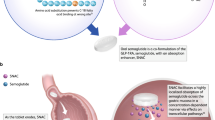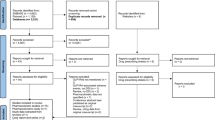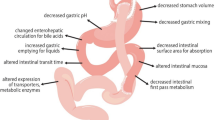Summary
Slow release formulations (SRFs) are developed on the basis that the response elicited by a drug is closely related to changes in its plasma concentrations. As a consequence, the drug in the SRF is considered bioequivalent to the same drug administered in a conventional or immediate release formulation (IRF). The available literature suggest that for drugs eliciting a simple response, i.e. theophylline, the response is not affected by the rate of input of drug into the systemic circulation. Therefore, the pharmacodynamics are closely related to the pharmacokinetics of the drug, which are independent of formulation. In this case, SRFs and IRFs are truly bioequivalent.
The pharmacological effect of some drugs, e.g. nifedipine, prazosin, furosemide (frusemide), etc., triggers compensatory homeostatic mechanisms. Therefore, the measured effect may not directly relate to the plasma drug concentration. Furthermore, the characteristics of the response will be modulated by the rate of input of the drug, i.e. drugs in SRF will elicit a greater response because a slow input triggers fewer homeostatic reactions. As a consequence, for drugs that trigger homeostatic reactions, a drug released from an SRF may not be bioequivalent to the same drug released from an IRF.
Finally, when tolerance to an effect develops, a drug administered as an SRF will elicit a smaller effect than when administered as an IRF. Therefore, even if the different formulations of a drug were bioequivalent on the basis of pharmacokinetic parameters, they would not be equivalent on the basis of pharmacodynamic factors. A better understanding of the influence of the rate of input of a drug on its pharmacodynamic profile will lead to optimisation of drug therapy.
Similar content being viewed by others
References
Abernethy DR. Problematic factors in pharmacodynamic studies. In Kroboth et al. (Eds) Pharmacokinetics and pharmacodynamics: current problems and potential solutions, Vol. 2, pp. 60–74, Harvey Whitney Books, Cincinnati, 1988
Alván G, Paintaud G, Eckernäs SÅ, Grannén A. Discrepancy between bioavailability as estimated from urinary recovery of frusemide and total diuretic effect. British Journal of Clinical Pharmacology 34: 47–52, 1992
Banerjee PS, Robinson JR. Novel drug delivery systems: an over-view of their impact in clinical pharmacokinetic studies. Clinical Pharmacokinetics 20: 1–14, 1991
Beermann B. Kinetics and dynamics of furosemide and slow-acting furosemide. Clinical Pharmacology and Therapeutics 32: 584–591, 1982
Bierman CW, Williams PV. Therapeutic monitoring of theophylline, rationale and current status. Clinical Pharmacokinetics 17: 377–384, 1989
Boxembaum H. Pharmacokinetic determinants in the design and evaluation of sustained release dosage forms. Pharmaceutical Research 2: 82–88, 1984
Branch RA, Roberts CJC, Homeida M, Levine D. Determinants of response to frusemide in normal subjects. British Journal of Clinical Pharmacology 4: 121–127, 1977
Brater DC. Resistance to loop diuretics: why it happens and what to do about it. Drugs 30: 427–443, 1985
Castañeda-Hernández G, Hoyo C, Herrera JE, Salazar LA, Vidal J, et al. Comparación farmacocinética de dos formulaciones orales de nifedipina: cápsula de 10 mg y tableta de liberatión prolongada de 20 mg. Memorias del XV Congreso Nacional de Cardiología, Villahermosa, Mexico. Abstract, p. 214, 1987
du Souich P, Larochelle P, Marleau S, Cusson J. The dose-response curve in indirectly acting drugs. In Lasagna et al. (Eds) Dose-response relationships in clinical pharmacology, pp. 95–113, Elsevier Science Publishers, Amsterdam, 1989
Ebihara A, Tawara K, Oka T. Pharmacodynamic and pharmacokinetic study of a slow release formulation of furosemide in man. Arzneimittel-Forschung 33: 163–166, 1983
Elliot HL, McLean K, Sumner DJ, Meredith PA, Reid JL. Immediate cardiovascular responses to oral prazosin — effects of concurrent β-blockers. Clinical Pharmacology and Therapeutics 29: 303–309, 1981
Elliot HL, Vincent J, Meredith PA, Reid JL. Relationship between plasma prazosin concentrations and α-antagonism in humans: comparison of conventional and rate-controlled (Oros) formulations. Clinical Pharmacology and Therapeutics 43: 582–587, 1988
Fleishaker JC, Phillips JP, Eller MG, Smith RB. Pharmacokinetics and pharmacodynamics of alprazolam following single and multiple oral doses of a sustained-release formulation. Journal of Clinical Pharmacology 29: 543–549, 1989
Fung HL. Pharmacokinetic determinants of nitrate action. American Journal of Medicine 76 (Suppl. 6A): 22–26, 1984
Goldman P. Rate-controlled drug delivery. New England Journal of Medicine 307: 286–290, 1982
Graefe KH, Ziegler R, Wingender W, Rämsch KD, Schmitz H. Plasma concentration-response relationship for some cardiovascular effects of dihydropyridines in healthy volunteers. Clinical Pharmacology and Therapeutics 43: 16–22, 1988
Greenblatt DJ, Shader RI. Drug absorption rate: a critical component of bioequivalence assessment in psychopharmacology. Journal of Clinical Pharmacology 27: 85–86, 1987
Hammarlund MM, Odlind B, Paalzow LK. Acute tolerance to furosemide diuresis in humans: pharmacokinetic-pharmacodynamic modelling. Journal of Pharmacology and Experimental Therapeutics 233: 447–453, 1985
Hendeles L, Iafrate RP, Weinberger M. A clinical and pharmacokinetic basis for the selection and use of slow release theophylline products. Clinical Pharmacokinetics 9: 95–135, 1984
Hochhaus G, Möllmann H. Pharmacokinetic-pharmacodynamic characteristics of the β2-agonists terbutaline, salbutamol and fenoterol. International Journal of Clinical Pharmacology Therapy and Toxicology 30: 342–362, 1992
Hochhaus G, Schmidt EW, Rominger KL, Möllmann H. Pharmacokinetic-pharmacodynamic correlation of pulmonary and cardiac effects of fenoterol in asthmatic patients after different routes of administration. Pharmaceutical Research 9: 291–297, 1992
Holford NHG, Sheiner LB. Understanding the dose-effect relationship: clinical application of pharmacokinetic-pharmacodynamic models. Clinical Pharmacokinetics 6: 429–453, 1981
Kellaway IW. Scientific rationale and clinical implications of sustained-release formulations. British Journal of Clinical Practice 44 (Suppl. 60): 9–13, 1988
Kleinbloesem CH, van Brummelen P, Breimer DD. Nifedipine: relationship between pharmacokinetics and pharmacodynamics. Clinical Pharmacokinetics 12: 12–29, 1987a
Kleinbloesem CH, van Brummelen P, Danhof M, Faber H, Urquhart J, et al. Rate of increase in the plasma concentration of nifedipine as a major determinant of its hemodynamic effects in humans. Clinical Pharmacology and Therapeutics 41: 26–30, 1987b
Kleinbloesem CH, van Brummelen P, van de Linde JA, Voogd PJ, Breimer DD. Nifedipine kinetics and dynamics in healthy volunteers. Clinical Pharmacology and Therapeutics 35: 742–749, 1984
Mattila M. Acute and subacute effects of diazepam on human performance: comparison of plain tablet and controlled release capsule. Pharmacology and Toxicology 63: 369–374, 1988
Montandon A, Skreta H, Riggenbach H, Ward J. Comparison of controlled-release diazepam capsules and placebo in patients in general practice. Current Medical Research and Opinion 10: 10–16, 1986
Murdoch D, Brogden RN. Sustained release nifedipine formulations: an appraisal of their current uses and prospective roles in the treatment of hypertension, ischaemic heart disease and peripheral vascular disorders. Drugs 41: 737–776, 1991
Odlind B, Beerman B. Renal tubular secretion and effects of furosemide. Clinical Pharmacology and Therapeutics 27: 784–790, 1980
Rudy DW, Voelker JR, Greene PK, Esparza FA, Brater DC. Loop diuretics for chronic renal insufficiency: a continuous infusion is more efficacious than bolus therapy. Annals of Internal Medicine 115: 360–366, 1991
Saletu B, Grünberger J, Amrein R, Skreta M. Assessment of pharmacodynamics of a new ‘controlled-release’ form of diazepam (Valium® CR Roche) by quantitative EEG and psychomotor analysis in neurotic subjects. Journal of International Medical Research 9: 408–433, 1981
Shi J, Benowitz NL, Denaro CP, Sheiner LB. Pharmacokinetic-pharmacodynamic modelling of caffeine: tolerance to pressor effects. Clinical Pharmacology and Therapeutics 53: 6–14, 1993
Sjöström PA, Odlind BG, Beermann BA, Hammarlund-Udenaes M. On the mechanism of acute tolerance to furosemide diuresis. Scandinavian Journal of Urology and Nephrology 22: 133–140, 1988
Smith RB, Kroboth PD. Influence of dosing regimen on alprazolam and metabolite serum concentrations and tolerance to sedative and psychomotor effects. Psychopharmacology 93: 105–112, 1987
Smith RB, Kroboth PD, Vanderlugt JT, Phillips JP, Juhl RP. Pharmacokinetics and pharmacodynamics of alprazolam after oral and IV administration. Psychopharmacology 84: 452–456, 1984
Sorkin EM, Clissold SP, Brogden RN. Nifedipine: a review of its pharmacodynamic and pharmacokinetic properties, and therapeutic efficacy in ischaemic heart disease, hypertension and related cardiovascular disorders. Drugs 30: 182–274, 1985
Uchino K, Isozaki S, Amano J, Tanaka N, Saitoh Y, et al. Clinical pharmacokinetics and diuretic effect of furosemide in plain tablet and retard capsule with normal subjects and cirrhotic patients. Journal of Pharmacobio-Dynamics 6: 684–691, 1983
van Harten J, van Brummelen P, Zeegers RRECM, Danhof M, Breimer DD. The influence of infusion rate on the pharmacokinetics and haemodynamic effects of nisoldipine in man. British Journal of Clinical Pharmacology 25: 709–717, 1988
Ward J, Skreta M. Multi-centre general practitioner comparative study of controlled-release (‘Valrelease’) and conventional (‘Valium’) forms of diazepam in patients suffering from anxiety. Current Medical Research and Opinion 11: 87–92, 1988
Author information
Authors and Affiliations
Rights and permissions
About this article
Cite this article
Castañeda-Hernández, G., Caillé, G. & du Souich, P. Influence of Drug Formulation on Drug Concentration-Effect Relationships. Clin. Pharmacokinet. 26, 135–143 (1994). https://doi.org/10.2165/00003088-199426020-00006
Published:
Issue Date:
DOI: https://doi.org/10.2165/00003088-199426020-00006




